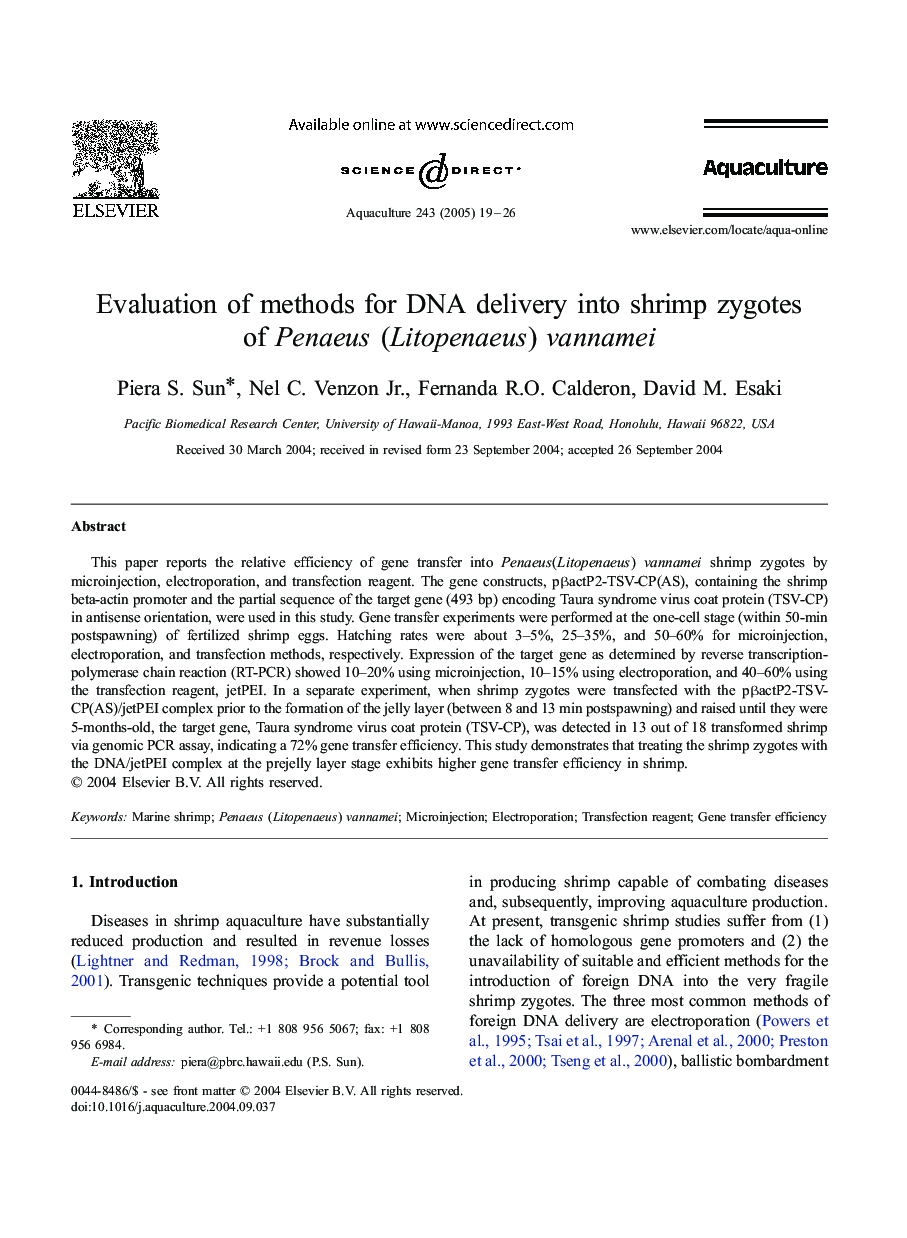| Article ID | Journal | Published Year | Pages | File Type |
|---|---|---|---|---|
| 8974985 | Aquaculture | 2005 | 8 Pages |
Abstract
This paper reports the relative efficiency of gene transfer into Penaeus(Litopenaeus) vannamei shrimp zygotes by microinjection, electroporation, and transfection reagent. The gene constructs, pβactP2-TSV-CP(AS), containing the shrimp beta-actin promoter and the partial sequence of the target gene (493 bp) encoding Taura syndrome virus coat protein (TSV-CP) in antisense orientation, were used in this study. Gene transfer experiments were performed at the one-cell stage (within 50-min postspawning) of fertilized shrimp eggs. Hatching rates were about 3-5%, 25-35%, and 50-60% for microinjection, electroporation, and transfection methods, respectively. Expression of the target gene as determined by reverse transcription-polymerase chain reaction (RT-PCR) showed 10-20% using microinjection, 10-15% using electroporation, and 40-60% using the transfection reagent, jetPEI. In a separate experiment, when shrimp zygotes were transfected with the pβactP2-TSV-CP(AS)/jetPEI complex prior to the formation of the jelly layer (between 8 and 13 min postspawning) and raised until they were 5-months-old, the target gene, Taura syndrome virus coat protein (TSV-CP), was detected in 13 out of 18 transformed shrimp via genomic PCR assay, indicating a 72% gene transfer efficiency. This study demonstrates that treating the shrimp zygotes with the DNA/jetPEI complex at the prejelly layer stage exhibits higher gene transfer efficiency in shrimp.
Keywords
Related Topics
Life Sciences
Agricultural and Biological Sciences
Aquatic Science
Authors
Piera S. Sun, Nel C. Jr., Fernanda R.O. Calderon, David M. Esaki,
